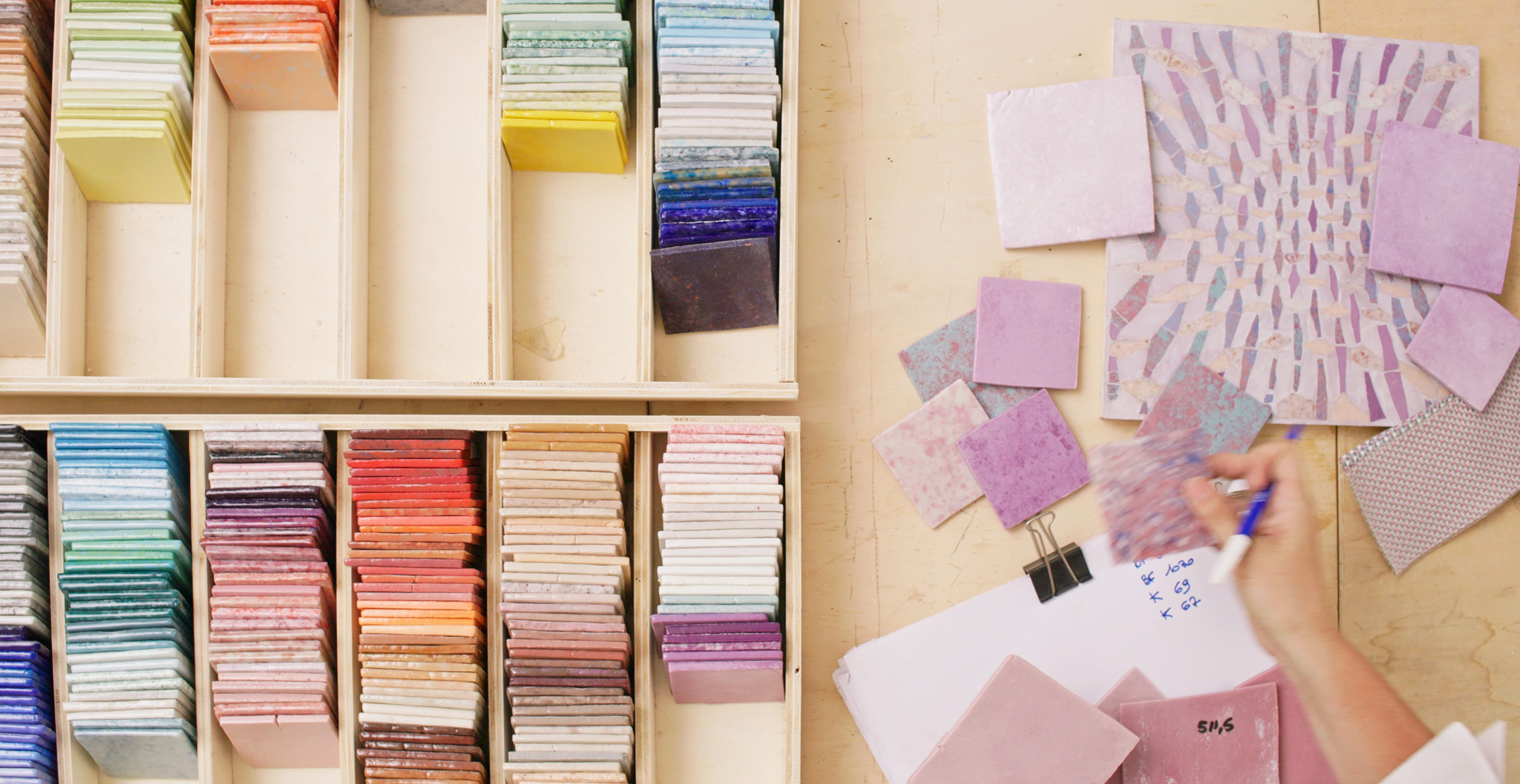The fourth episode of Face to face is dedicated to Simona Sporchia, a master in the contemporary interpretation of the mosaic. Growing up in Milan, Simona was one of those little girls who always carried her sketchbook with her. She portrayed people, landscapes, and nature. Every chance she got, she’d arm herself with coloured pencils and give free rein to her imagination.
The artistic high school represented a natural landing place at the end of middle school. Simona discovered a passion for colours and materials; artistic techniques are the foundation for finding her expressive language.
She continued her studies at the Faculty of Architecture, but her heart was elsewhere: Simona felt the need to shape her thoughts with her hands, to return to her old love for a less icy and reasoned material. «I feel like art is a calling,» she says. She remembers the power of certain mosaic masterpieces she studied in school. It is where her inner gaze is focused. She drops out of university and enrolls in a mosaic school to learn the technique; she becomes a master mosaicist and opens her own workshop in Monza.

The encounter with Paola Lenti occurs during the first lockdown’s silence. They worked by assonance in that suspended atmosphere; in the warp and weft of the collection’s fabrics, they captured the same foundations of the mosaic composition: tesserae and joints, while intertwining and matching, create a decoration, just like the threads woven on the loom Furthermore, both realized that the combination of more shades determines the final colour equally in the mosaic and the company fabrics.
«It is the common mark, the starting point of a shared path», remembers the mosaicist.
Together, they decide to subvert the traditional mosaic technique to create tesserae with different shapes and dimensions, round for example; they strip the joint of its function as a “hinge” to make it a background that recalls the chromatic palette of the collection products with which it is combined.
A new and contemporary vision of the mosaic emerges, where even the materials used support the desire to convey unprecedented suggestions: ceramics, recycled glass, silica powders, and oxides give rise to tesserae that differ from one another and in exclusive colours. The end result is a series of modules for flooring, side tables, and large table tops that have become part of the collection.
Nerikomi, a Japanese ceramic production technique, inspired the most recent experiments. Simona Sporchia creates coloured ceramic tesserae in her Monza workshop, which she then cuts, fires, and inserts on backgrounds made of concrete agglomerates and natural materials such as marble and recycled shards. The Venetian floor served as inspiration, with its chromatic bases in various shades punctuated by coloured grits.

«With Paola Lenti, research never ends», says the mosaic artist. «We are currently working on developing a colour library for my products so that they can be combined with all of the yarns and fabrics in the collection. Paola has a gift: she is capable of bringing different materials together through colour, which is always available in numberless shades, with unmistakable results»

Face to face with
Simona Sporchia, Monza
Interview by Anna Vullo
Director Maurizio Natta
Cinematographer Fabrizio Polla Mattiot @ateliermistral
Filmed by Maurizio Natta, Fabrizio Polla Mattiot @ateliermistral, Gianlorenzo Bernabò di Negro
Audio post production Top Digital
Soundtrack Universal Music Publishing Ricordi Srl

